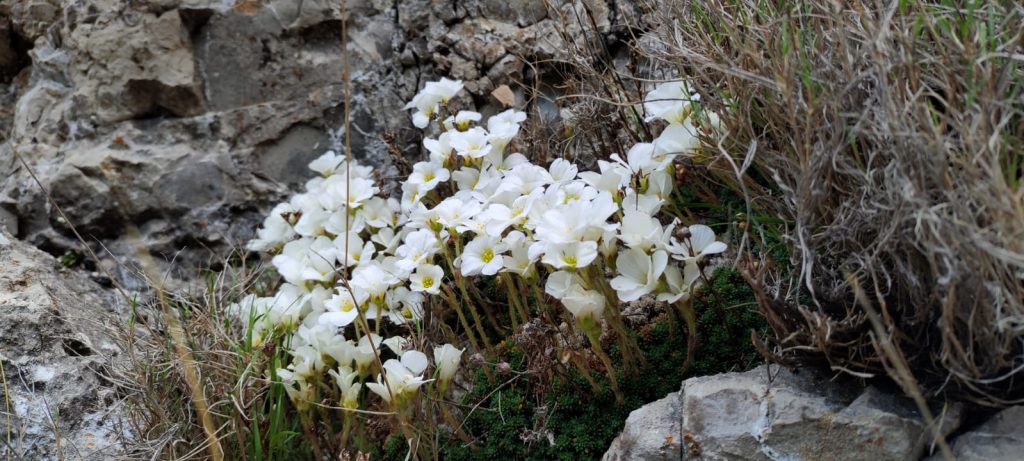We report the interview with our PM Costantino Bonomi that Chiara Veronesi published on the MuSe website.
Saxifraga tombeanensis: The small plant that clings to the walls of Mount Baldo
With the arrival of summer, the field monitoring activities of LIFE SEEDFORCE come alive, a project involving 15 Italian and foreign partners with the aim of saving native Italian plants from extinction, thanks to seed banks.
Among these, the Saxifraga tombeanensis, a protected species endemic to the Garda Prealps which owes its name to Monte Tombea, on the border between the provinces of Brescia and Trento. A small cushion with candid white flowers, which grows slowly, clinging to the most impervious and steep walls, sheltered from human and animal visitors. A species that can hardly be seen by those who frequent the mountains of the area.
In fact, to find it, researchers of the project – who in recent days have carried out an initial inspection to assess the state of the blooms – will rely on a drone in the coming weeks.
We talk about it with Costantino Bonomi, MUSE botanist and coordinator of the LIFE SEEDFORCE project.
In the photos we see a researcher fixing numbered tags on the rock wall. How is this type of research carried out and how are the locations for monitoring chosen?
Using a drone we are able to scan all the cliffs, even those usually inaccessible, to correctly quantify the size of the populations, also counting the age groups and the reproductive potential.
This is an important data for assessing the risk of extinction and planning interventions to protect the species. Fixing a tag of certain dimensions allows the drone to calibrate the dimensions of the shots and carry out precise counts of the number of individuals and the surface actually occupied. The intervention sites are those included within the protected areas of the Natura 2000 network which covers almost all the populations present in Trentino.
What are you looking for among these walls, besides the Saxifraga?
We collect data on companion species and on the morphological details of the habitat in which the species lives, to plan future strengthening and repopulation interventions by transplanting new individuals.
What are the next steps of the project?
Collect the seeds, when ripe, from accessible individuals, study their germination requirements and start their propagation in the laboratory and in the greenhouse to then plan restocking in nature.









